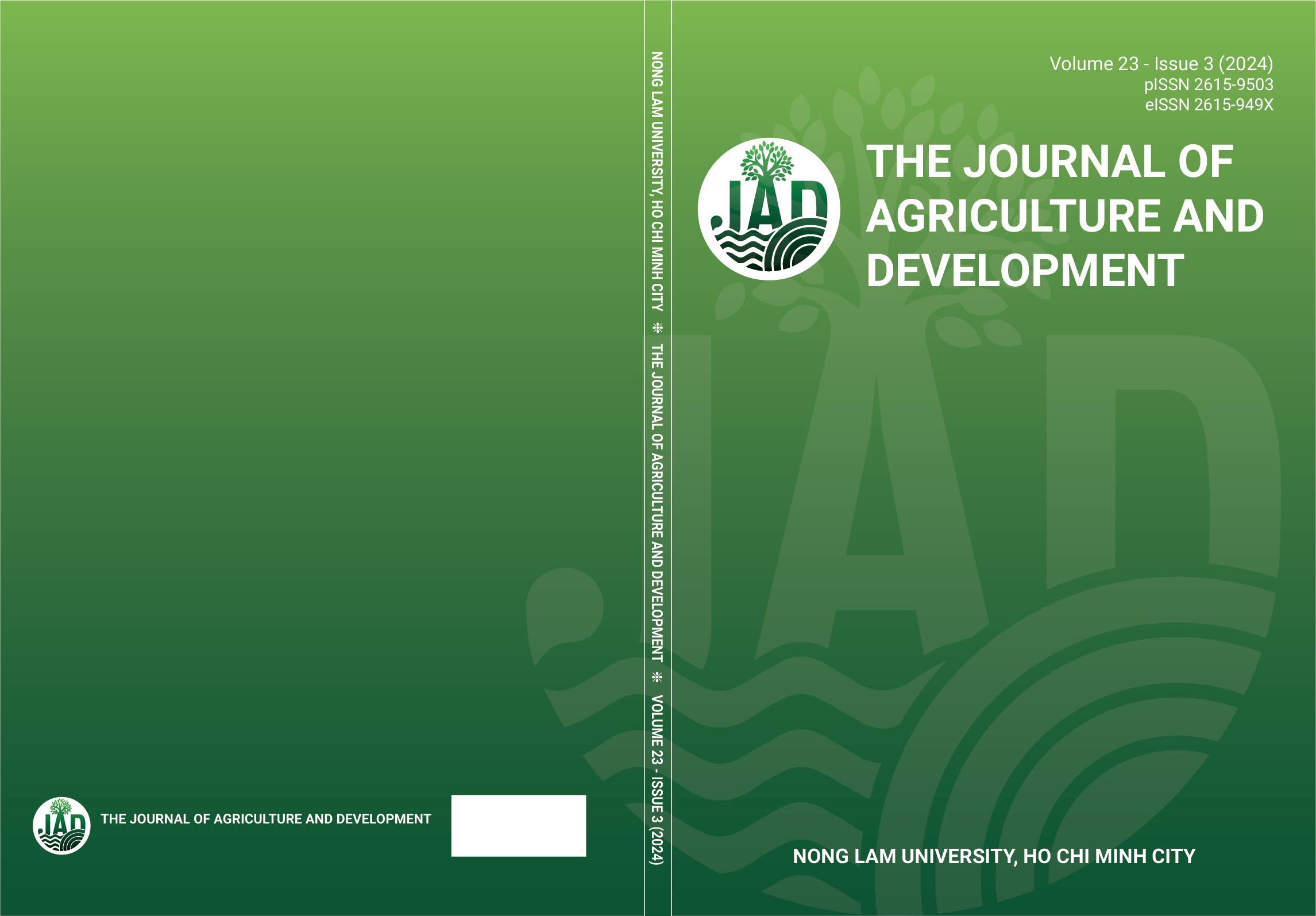Identification of sanchi samples based on DNA barcodes
Main Article Content
Abstract
For centuries, sanchi has been used in traditional medicine in East Asian countries to promote health and fitness. To identify and distinguish sanchi from adulterants, this study was conducted to determine the sequence of four DNA barcodes. The PCR products of the four barcodes were 330 bp (rbcL), 822 bp (matK), 484 bp (trnH-psbA), and 438 bp (ITS1). Genetic relationship analysis showed that the four DNA barcode regions had high similarity with other Panax species. Three barcodes, matK, trnH-psbA, and ITS1, confirmed that the studied samples belonged to Panax notoginseng, distinguished from Panax pseudoginseng, and can be used to identify Panax notoginseng.
Article Details
References
Aboul-Maaty, N. A. F., & Oraby, H. A. S. (2019). Extraction of high-quality genomic DNA from different plant orders applying a modified CTAB-based method. Bulletin of the National Research Centre 43(1), 1-10. https://doi.org/10.1186/s42269-019-0066-1.
Cheng, T., Xu, C., Lei, L., Li, C., Zhang, Y., & Zhou, S. (2016). Barcoding the kingdom Plantae: new PCR primers for ITS regions of plants with improved universality and specificity. Molecular Ecology Resources 16(1), 138-149. https://doi.org/10.1111/1755-0998.12438.
Huynh T. N., N. P. M., & Ho T. V. (2021). Design PCR primer for distinguishing between Panax stipuleanatus and Panax notoginseng. Journal of Science, Technology, and Food 21(2), 73-79.
Kress, W. J., & Erickson, D. L. (2007). A two-locus global DNA barcode for land plants: the coding rbcL gene complements the non-coding trnHpsbA spacer region. PLoS One 2(6), e508. https://doi.org/10.1371/journal.pone.0000508.
Kress, W. J., Wurdack, K. J., Zimmer, E. A., Weigt, L. A., & Janzen, D. H. (2005). Use of DNA barcodes to identify flowering plants. Proceedings of The National Academy of Sciences 102(23), 8369-8374. https://doi.org/10.1073/pnas.0503123102.
Kumar, S., Stecher, G., Li, M., Knyaz, C., & Tamura, K. (2018). MEGA X: molecular evolutionary genetics analysis across computing platforms. Molecular Biology and Evolution 35(6), 1547-1549. https://doi.org/10.1093/molbev/msy096.
Ngan, F., Shaw, P., But, P., & Wang, J. (1999). Molecular authentication of Panax species. Phytochemistry 50(5), 787-791. https://doi.org/10.1016/S0031-9422(98)00606-2.
Trang, N. T., Mai, N. T., Zhuravlev, Y. N., & Sciences. (2017). Application of DNA barcoding to authentic Panax vietnamensis. American Scientific Research Journal for Engineering, Technology, and Science 29(1), 60-67.
Xu, Y., Tan, H. Y., Li, S., Wang, N., & Feng, Y. (2018). Panax notoginseng for inflammation-related chronic diseases: a review on the modulations of multiple pathways. The American Journal of Chinese Medicine 46(05), 971-996. https://doi.org/10.1142/S0192415X18500519.
Yu, J., Wu, X., Liu, C., Newmaster, S., Ragupathy, S., & Kress, W. J. (2021). Progress in the use of DNA barcodes in the identification and classification of medicinal plants. Ecotoxicology and Environmental Safety 208, 111691. https://doi.org/10.1016/j.ecoenv.2020.111691.
Zuo, Y., Chen, Z., Kondo, K., Funamoto, T., Wen, J., & Zhou, S. (2011). DNA barcoding of Panax species. Planta Medica 77(2), 182-187. https://doi.org/10.1055/s-0030-1250166.








